- عنوان کتاب: Artificial Intelligence and Cloud Computing Applications in Biomedical Engineering
- نویسنده: H S Madhusudhan
- حوزه: کاربرد هوش مصنوعی در پزشکی
- سال انتشار: 2025
- تعداد صفحه: 251
- زبان اصلی: انگلیسی
- نوع فایل: pdf
- حجم فایل: 1.90 مگابایت
فصلهای پیشنهادی برای این کتاب شامل توالی ژنوم و مصورسازی آن، نقش هوش مصنوعی و فضای ابری در تشخیص چندین بیماری، الگوریتمهای الهام گرفته از طبیعت برای تشخیص بیماری و چارچوبهای به کار رفته برای طبقهبندی بیماریها است.
فصلهای کتاب عمدتاً بر موارد زیر تمرکز دارند:
• طراحی تکنیکهای هوش مصنوعی برای تشخیص چندین بیماری.
• بررسی نقش هوش مصنوعی در مهندسی زیستپزشکی.
• پیادهسازی الگوریتمها و مدلهای یادگیری ماشین (ML) برای تشخیص ژنوم.
• تجزیه و تحلیل توالی ژنوم.
فصل 1 بر چگونگی کمک هوش مصنوعی به توسعه و درک دارو تأکید دارد. هوش مصنوعی پتانسیل بالایی در بسیاری از زمینههای مراقبتهای بهداشتی، به ویژه در تحقیق و تولید دارو دارد. به لطف ادغام هوش مصنوعی، میتوان مجموعه دادههای بزرگ را تجزیه و تحلیل کرد و به بینشهای مفید تبدیل کرد. با شناسایی اهداف درمانی جدید و افزایش رویکردهای درمانی فعلی، این مهارت، حوزه کشف دارو را گسترش میدهد. شرکتهای داروسازی برجسته، ادغام فناوری هوش مصنوعی را در رویههای تحقیقاتی خود آغاز کردهاند تا ظرفیت خود را برای ایجاد داروهای جدید از طریق استفاده از یادگیری ماشین و زیستشناسی محاسباتی بهبود بخشند.
فصل ۲ رویکردهای مختلف تصویربرداری از کلاسیک تا پیشرفته هوش مصنوعی/یادگیری ماشین را پوشش میدهد و اینکه چگونه تجزیه و تحلیل تصویر میتواند استخراج ویژگی، تجسم توالی ژنومی و تجزیه و تحلیل بیان ژن را بهبود بخشد. این کتاب از طریق مطالعات موردی عملی نشان میدهد که چگونه این تکنیکها در انواع مسائل ژنومیک گیاهی، مانند تجسم رونوشت، تجزیه و تحلیل متاژنومیک و بهبود محصولات کشاورزی، کاربرد دارند و بینشهایی در مورد پتانسیل آنها ارائه میدهند و خوانندگان را برای توسعه راهحلهای سفارشی برای نیازهای تحقیقاتی خاص راهنمایی میکنند.
فصل ۳ به بررسی گردشهای کاری محاسباتی، اتوماسیون خطوط لوله بیوانفورماتیک و ادغام با سرویسهای ابری، با پشتیبانی از مثالهای دنیای واقعی که کارایی و بهرهوری افزایش یافته را نشان میدهند، میپردازد. تأثیر دگرگونکننده یادگیری ماشین و هوش مصنوعی بر بیوانفورماتیک ساختاری بررسی میشود و کاربردها، سرویسهای هوش مصنوعی مبتنی بر ابر و روندهای آینده در مدلسازی پیشبینی و پزشکی شخصیسازی شده برجسته میشوند.
فصل ۴ روشهای متنوع هوش مصنوعی مورد استفاده، مانند پردازش زبان طبیعی (NLP) برای تجزیه و تحلیل علائم، یادگیری ماشین برای مدلسازی پیشبینی و یادگیری عمیق (DL) برای تصویربرداری را برجسته میکند. نتایج نشان میدهد که هوش مصنوعی میتواند قابلیتهای شیوههای پزشکی فعلی را به طور قابل توجهی افزایش دهد و راه را برای راهحلهای مراقبتهای بهداشتی پیشگیرانهتر و شخصیسازیشدهتر هموار کند. این تحقیق با هدف ارائه یک مرور کلی جامع از ادغام هوش مصنوعی در مدیریت بیماری و پتانسیل آن برای متحول کردن آینده مراقبتهای بهداشتی انجام شده است.
فصل 5 به نقش هوش مصنوعی در پزشکی برای تشخیص و پیشگیری از بیماریهای مختلف میپردازد. هوش مصنوعی از طریق رویکردهای جدیدتری مانند یادگیری ماشینی و یادگیری عمیق، انقلابی در تشخیص و پیشگیری از بیماریها ایجاد میکند. هوش مصنوعی با تجزیه و تحلیل دادههای پزشکی متنوع مانند سونوگرافی، MRI، ماموگرافی، ژنومیک و سیتیاسکن، تشخیصهای بسیار دقیق و سریعی را امکانپذیر میکند که اغلب از روشهای سنتی پیشی میگیرد. هوش مصنوعی علائم اولیه بیماریهایی مانند سرطان، آلزایمر و بیماریهای قلبی عروقی را شناسایی میکند و درمانهای شخصیسازیشده را بر اساس پروفایلهای ژنتیکی، عوامل سبک زندگی و تأثیرات محیطی ارائه میدهد. تجزیه و تحلیل پیشبینیکننده هوش مصنوعی، شیوع بیماری و خطرات فردی بیمار را پیشبینی میکند و امکان اقدامات پیشگیرانه مراقبتهای بهداشتی را فراهم میکند.
فصل 6 با هدف بررسی چندین رویکرد و استراتژی برای تشخیص، طبقهبندی و طبقهبندی زودهنگام سرطان ریه انجام شده است. سرطان ریه اغلب در مراحل اولیه بدون علائم ظاهر میشود و تشخیص را دشوار میکند. در نتیجه، شناسایی به موقع سرطان برای بهبود نتایج بیمار بسیار مهم است. تشخیص زودهنگام، احتمال درمان موفقیتآمیز و بهبودی افراد مبتلا به این بیماری را به میزان قابل توجهی افزایش میدهد. فصل ۷ بر روشها/چارچوبهای تشخیص رتینوپاتی دیابتی، به ویژه تشخیص زودهنگام و مرحلهبندی رتینوپاتی دیابتی (طبیعی، خفیف، متوسط و شدید) تمرکز دارد و تعدادی از مجموعه دادههای موجود فوندوس شبکیه را بررسی میکند. این فصل به بررسی شکافهای تحقیقاتی بالقوه در تشخیص/طبقهبندی رتینوپاتی دیابتی میپردازد و حوزههایی را که نیاز به مطالعه و تحلیل بیشتر دارند، برجسته میکند.
فصل ۸ به تجزیه و تحلیل مقایسهای رویکردهای پیشرفته متعدد برای تشخیص تصویربرداری پزشکی میپردازد و ویژگیهای کلیدی مختلف را ارزیابی میکند. این فرآیند شامل ارزیابی چندین عنصر حیاتی، از جمله دادههای معنایی، قابلیت تفسیر، تجسم و اندازهگیری پیوندهای منطقی در دادههای پزشکی است. بنابراین، میتوانیم نتیجه بگیریم که پتانسیل تصویربرداری در آینده از درجه بالایی از دقت تشخیصی برای تشخیص بیماریهای مختلف برخوردار خواهد بود که برای تشخیص بیماری مهم است و شانس بیشتری برای تحقق در زمینه تشخیص بالینی دارد. در نهایت، کاربردها و پتانسیلها نیز پوشش داده شدند.
فصل ۹ به بررسی کاربرد فناوری پیشرفته در مهندسی زیست پزشکی، از جمله مفهومسازی، توسعه و استقرار راهحلهای زیست پزشکی میپردازد. این کار بر الگوریتمهای یادگیری ماشین در پیشرفتهای مهندسی زیستپزشکی و توسعه نرمافزار متمرکز است.
The chapters proposed for the book include genome sequence and visualization, the role of AI and cloud in the detection of several diseases, nature-inspired algorithms for disease detection, and frameworks employed for disease classification.
The book chapter majorly focuses on
• Designing AI techniques for several disease detection.
• Exploring the role of AI in biomedical engineering.
• Implementing machine learning (ML) algorithms and models to genome detection.
• Analysis of genome sequence.
Chapter 1 emphasizes how AI helps in drug development and comprehension. AI has great potential in many areas of healthcare, particularly in research and medication creation. Large datasets may be analyzed and transformed into useful insights thanks to the incorporation of AI. By identifying novel therapeutic targets and enhancing current treatment approaches, this skill expands the field of drug discovery. Prominent pharmaceutical firms have begun integrating AI technology into their research procedures in an effort to improve their capacity to create novel medications through the use of ML and computational biology.
Chapter 2 covers various approaches is imagery from classical to advanced AI/ML and how image analysis can enhance feature extraction, genomic sequence visualization, and gene expression analysis Through practical case studies, the book shows how these techniques apply to a variety of plant genomics issues, such as transcriptome visualization, metagenomics analysis, and crop improvement, providing insights to their potential and guiding readers to develop customized solutions for specific research needs
Chapter 3 explores computational workflows, automation of bioinformatics pipelines, and integration with cloud services, supported by real-world examples that demonstrate enhanced efficiency and productivity. ML and AI’s transformative impact on structural bioinformatics are examined, highlighting applications, cloud-based AI services, and future trends in predictive modeling and personalized medicine.
Chapter 4 highlights the diverse AI methodologies utilized, such as natural language processing (NLP) for symptom analysis, ML for predictive modeling, and deep learning (DL) for imaging. The results demonstrate that AI can substantially enhance the capabilities of current medical practices, paving the way for more proactive and personalized healthcare solutions. This research aims to provide a comprehensive overview of AI integration in disease management and its potential to transform the future of healthcare.
Chapter 5 covers the role of AI in medicine for the detection and prevention of various diseases. AI is revolutionizing disease detection and prevention through newer approaches like ML and DL. By analyzing diverse medical data providers such as ultrasound, MRI, mammography, genomics, and CT scans, AI enables highly accurate and rapid diagnoses, often surpassing traditional methods. AI identifies early signs of diseases like cancer, Alzheimer’s, and cardiovascular conditions, providing personalized treatments based on genetic profiles, lifestyle factors, and environmental influences. AI’s predictive analytics forecast disease outbreaks and individual patient risks, allowing proactive healthcare measures.
Chapter 6 aims to examine several approaches and strategies for early lung cancer detection, classification, and classification. Lung cancer often appears without symptoms in its early stages, making detection difficult. Consequently, the timely identification of cancer is crucial for improving patient outcomes. Early detection significantly enhances the likelihood of successful treatment and recovery for individuals affected by the disease.
Chapter 7 focuses on methodologies/frameworks for detecting Diabetic Retinopathy, particularly the early diagnosis and staging of DR (normal, mild, moderate, and severe), and reviews a few of the existing retinal fundus datasets. This chapter discusses the potential research gaps in DR detection/classification, highlighting areas needing further study and analysis.
Chapter 8 covers a comparative analysis of numerous state-of-the-art approaches for medical imaging diagnosis and evaluates various key qualities. The process involves assessing several critical elements, including semantic data, interpretability, visualization, and the measurement of logical linkages in medical data. Thus, we can conclude that the potential for imaging in the future will have a high degree of diagnostic accuracy for the diagnosis of various diseases, which is important for the disease’s diagnosis and has a higher chance of being realized in the field of clinical diagnosis. Lastly, the applications and potential were also covered.
Chapter 9 discusses the application of advanced technology in biomedical engineering, including the conceptualization, development, and deployment of biomedical solutions. This work focuses on ML algorithms in advancements of biomedical engineering and identification and exploration of the bio fabrication, biomechanics, and biomaterials applications. The opportunities, challenges, and future enhancements in the ML algorithms for biomedical engineering are discussed in this chapter.
Chapter 10 explores the role of AI in drug discovery and development and its application in emergency and critical care through decision support systems. Robotic and automated systems, including surgical robots and AI-assisted surgeries, as well as automation in laboratory diagnostics and rehabilitation, are also discussed.
Chapter 11 presents a design to aid the blind person using edge detection. The technique aims to give the patient information about the free space apart from the obstacles around him in all directions for better mobility. The technique comprises three modules: the histogram equalization module, the segmentation module, and the Kalman filtering module. In the histogram equalization module, canny edge detector is employed to detect edges and subsequently, histogram equalization is carried out. Furthermore, adaptive region growth is employed in the segmentation module to complete the segmentation process.
We hope that the works published in this book will be able to serve the concerned communities of ML and healthcare society.
این کتاب را میتوانید از لینک زیر بصورت رایگان دانلود کنید:
Download: Artificial Intelligence and Cloud Computing Applications in Biomedical Engineering



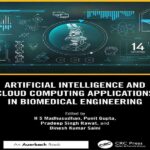


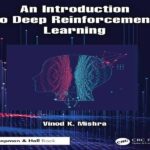
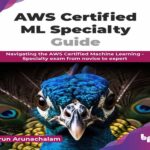
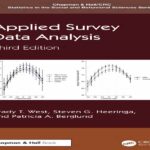



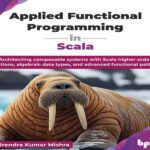


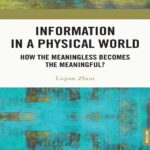


















نظرات کاربران